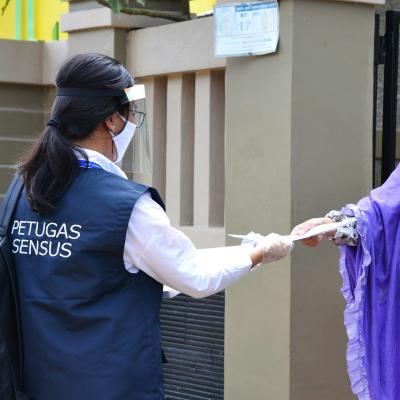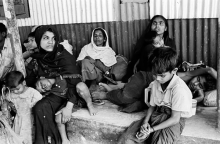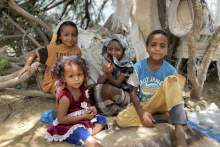"It's not just numbers. We're not just numbers. It's more than that. It's a person's life"
Daniela Rodriguez, formerly stateless child, South Africa
KEY ISSUES ON DATA AND STATISTICS
- While statistics remain poor, in part due to their politicisation, at least 15 million people are estimated to be stateless worldwide, with the nationality of tens of millions at risk and hundreds of millions denied equal nationality rights.
- Quantifying the number of stateless people globally is challenging due to the methodological and political challenges relating to data collection and reporting, which has led to gaps and inconsistencies in the available statistics.
- States often give insufficient priority to identifying or accurately quantifying statelessness, sometimes as a deliberate obfuscation strategy, to hide the issue. Indeed, the state’s role in data collection can be directly problematic in contexts where the state itself is responsible for the denial of nationality of its own population.
- Under its statelessness mandate, UNHCR publishes data annually on the number of stateless people in countries around the world. However, this global data offers an incomplete picture due to gaps in state reporting and inconsistencies in data collection.
- Methodological challenges related to definitions, labels, categorisations, and (self)identification contribute to the lack of reliable or comparable data
- While statistical information can be an important tool in engaging states to resolve statelessness, it is not the only or even the primary means by which to understand the severity of the issue or routes to potential solution
- The UN Statistical Commission’s International Recommendations on Statelessness Statistics seek to improve the quality of reporting in national statistical systems for stateless people and those without a recognised nationality status, but the framework it offers also has some limitations.
HOW MANY PEOPLE ARE STATELESS WORLDWIDE?
There are no comprehensive statistics available on the number of stateless people worldwide and there are significant challenges relating to data collection and reporting. Who is counted (and who is not), how and by who, and what is the data being used for: these are not just methodologically complex questions, they are also political choices that influence the availability, quality and reliability of statelessness statistics. Some groups therefore describe the number of people affected by statelessness worldwide simply to be “uncountable millions”.
Working estimates of the global population impacted by statelessness range within the millions. UNHCR collates and reports on data collated from a wide variety of sources, to reach a total of 4.4 million stateless people who have been “counted”. However, UNHCR acknowledges that this number is not representative due to gaps and inconsistencies in data collection and reporting, and that the true number is much higher. Another widely cited figure in academia and media reporting places the number of people estimated to be stateless worldwide at over 15 million – a conclusion originally drawn in a review of the global statistical reporting carried out by ISI in 2014.
The full scope of statelessness, unequal and precarious nationality rights is larger still: the nationality of tens of millions more is at risk due to lack of access to basic documentation and other factors that render their legal status precarious, and hundreds of millions are denied equal nationality rights due to discrimination on the grounds or race, ethnicity or religion, or gender. Moreover, without significant action, the number of those impacted by stateless globally is only increasing year on year due to the intergenerational nature of statelessness and the continued emergence of new large-scale situations of induced statelessness in the 21st century, such as in Assam, India, and in the Dominican Republic.
UNHCR’S GLOBAL STATISTICAL REPORTING ON STATELESSNESS
As part of its mandate responsibility for refugees and stateless people, UNHCR tracks data on the scale of forced displacement and statelessness worldwide. It is currently the only body that systematically collates and publishes figures for the number of stateless people globally. Since 2004, its annual Global Trends reports include data on statelessness and UNHCR’s Refugee Data Finder also offers access to statelessness statistics. However, due to significant gaps in state reporting, as well as inconsistencies in data collection and reporting methods, the global statistical reporting on statelessness is incomplete and not consistently reliable.
As of 2025, only 101 states report national data to UNHCR – with countries such as Pakistan and the Dominican Republic being significant omissions. The data reported is drawn from information produced by different actors, in different places, using different approaches – not all of which deliver the same level of reliability or produce readily-comparable data. For example, while some countries provide a figure based on NGO reporting, others do not, even if this type of data is available. Although UNHCR’s statelessness data also covers people of “undetermined nationality” (those who lack proof of nationality and have ties to multiple states or are treated by the country of residence as having potential claims to nationality elsewhere), only some countries include this second category in their reporting, while others do not, or else use alternative interpretations of this categorisation. In the presentation of its statistical reporting, UNHCR includes a disclaimer that the categorisations used by different country operations have in the past been applied inconsistently, and that the true number of stateless people is likely to be much higher than the data shown. However in its other reports and public messaging, UNHCR continues to present as reliable the information collected through the Global Trends report.
UNDERSTANDING UNHCR'S STATELESSNESS DATA
Accessing the full overview of UNHCR’s statelessness data requires navigating to Table 4 of the compiled annexes to the Global Trends report (a downloadable Excel sheet). This Table offers a better insight into how the data has been constituted:
- An asterisk (*) is used to identify countries where UNHCR has information about a stateless population, but no reliable data – a total of 17 countries as of 2025. Many of these have persistently been marked with an asterisk in the annual data for many years.
- A dash (-) is used to denote countries where there is no data or the value is zero.
- Useful contextual information on data coverage, methodology and sources is included in some cases in footnotes.
- The data is broken down into “persons under UNHCR’s statelessness mandate” and “total number of stateless people including forcibly displaced stateless” (a category that includes stateless people who are also refugees or internally displaced). It also indicates what number of stateless people in each country are “UNHCR-assisted”.
Note that footnotes, asterisks, and dashes are only indicated in Table 4 and the significance of what they represent is lost through the presentation of the statelessness statistics in the collated population data included in the Global Trends report and on UNHCR’s general statistical dashboard. As of 2025, the mid-year trends data (published every January) does not include a separate statistical table with this more comprehensive break-down of data for statelessness.
UNHCR reports on all stateless people under its mandate, including those who are also refugees, asylum seekers or internally displaced persons (but excluding Palestinians who are receiving assistance from UNRWA). This means that stateless refugees are visible in both refugee reporting and statelessness reporting – although they are not “counted” twice in the aggregate data. This dual status approach has been in place for all countries since 2020, after being gradually introduced from 2017 for only Rohingya refugees in certain countries. Prior to 2017, stateless refugees were only included in refugee statistical reporting. In practice, some countries today (such as India) only report on the displaced Rohingya refugees within their territory as part of their statelessness reporting and do not report on other stateless populations present in the country, even where these are significant.
“The decision of the statesmen to solve the problem of statelessness by ignoring it is further revealed by the lack of any reliable statistics on the subject”
Hannah Arendt in The Origins of Totalitarianism, 1951, p.279
THE POLITICS OF DATA
States hold the primary responsibility for identifying stateless people in their territory, but only around half of UN member states report data on statelessness. Pledges to improve data collection were made by 35 states as part of High-Level UN processes on refugees and statelessness, and there have been efforts by international agencies such as UNHCR and by human rights mechanisms to stimulate improved data collection and reporting. Nevertheless, states still often give insufficient priority to measures to identify or accurately quantify statelessness, sometimes as a deliberate obfuscation strategy to deny the existence or prevalence of statelessness in the country. Indeed, the state’s role in data collection can be directly problematic in contexts where the state itself is responsible for the denial of nationality of its own population.
Statelessness is a product and manifestation of structural exclusion and its key risk factors – discrimination and marginalisation, poverty, lack of documentation, membership of remote or nomadic populations – also contribute to the problem of ascertaining the number of stateless people in any given country. The state may be politically motivated to avoid reporting on numbers as a means of denying that population’s existence – even when there are credible non-state estimates and alternative sources of population data indicating otherwise – or it may seek to manipulate or utilise the data to further target, stigmatise or marginalise the population.
At the same time, states often contend that they can only act on statelessness if they have evidence (i.e. reliable statistics) showing that it is a problem in their country. While such quantitative data is one way to understand the scale of the problem, a preoccupation with population statistics as the only effective baseline for determining severity can distract from the power of using qualitative data on the known causes of statelessness, such as discrimination and problems with nationality laws and administrative procedures, as well as experiential data on the human impact of statelessness to guide action.
METHODOLOGICAL BARRIERS TO THE QUANTIFICATION OF STATELESSNESS
Data collection and reporting is challenging not just politically, but also methodologically. Stateless people are often a “hidden population”, meaning that it is not straightforward to identify them through more regular population data sources, such as national censuses, household surveys, population registries, and immigration databases. Inadequate methodologies can affect reliability even where attempts have been made to specifically modify these types of data collection to try to capture statelessness. Tailored mapping exercises have been used to collect more accurate statelessness data but these can also suffer from the same methodological difficulties and the results do not always provide a complete picture of the situation in the country due to their often limited scope.
Some of the main methodological hurdles are definitional. The definition of a “stateless person as someone who is “not considered as a national […] under the operation of its law” has been interpreted authoritatively as being both a question of law and fact. This means that there are people who are eligible for nationality as a matter of law, but not considered nationals by the state, which can obscure their statelessness. The inconsistent use of terminology within what in practice can manifest as a grey area between clearly being stateless and clearly being a citizen (‘de facto stateless’, ‘effectively stateless’, lacking an ‘effective nationality’, ‘undetermined nationality’) can lead to contradictory uses by different actors in the field, causing a problem when comparing statelessness datasets. There are also those whose nationality rights are under threat, such as those who are at risk of statelessness or whose nationality rights are unequal or insecure. This larger group is often left out of statelessness statistical reporting, missing valuable data on the broader and intergenerational impact of nationality issues.
Another significant challenge is that quantifying statelessness based on self-identification may be unreliable. Many stateless people identify with the country of their birth, descent, and habitual residence to the extent that they do not see themselves as being stateless – they may be unaware that they are actually not considered as nationals by “their” state. Indeed, when such individuals are in their own countries, they will almost always receive greater protection if confirmed to be nationals and the ‘stateless’ label can be counterproductive – and indeed for advocacy purposes it can be strategically advantageous to avoid the stateless label and focus on securing recognition of a group as nationals. Such considerations can affect people’s willingness to identify as stateless even if strictly speaking the situation could fall within the scope of the stateless definition (e.g. even when they may have been subject to persistent denial of documentation or citizenship status over generations). Many stateless people simply do not see themselves as stateless, or they may deny the use of the stateless label, or else be reluctant to draw attention to their status.
THE INTERNATIONAL RECOMMENDATIONS ON STATELESSNESS STATISTICS (IROSS)
In an attempt to strengthen and bring greater consistency to the methods used by states to collect data on statelessness within their national statistical systems, the Expert Group on Refugees Internally Displaced Persons and Statelessness Statistics (EGRISS) of the UN Statistical Commission developed the International Recommendations on Statelessness Statistics (IROSS). Following the adoption of these recommendations in 2023, EGRISS provides workshops on integrating the IROSS and monitors state implementation with the aim of facilitating peer learning and promoting uptake.
The IROSS advises states to capture data on all stateless persons and those “without a recognised nationality status” (including those whose nationality is unclear or under dispute). It suggests this be organised into three statistical categories:
- People with a recognised statelessness status
- People without a recognised statelessness or nationality status and who hold a link to another country or countries
- People without a recognised statelessness or nationality status and who do not hold a link to another country or countries
In terms of “links to another country” – i.e. the distinction between categories 1 and 2 – the IROSS suggests considering territorial links (birth or habitual residence) or family links (filiation or marriage), as well as factors such as membership of certain minority groups, border or nomadic communities, migrants and refugees, and countries formed as a result of state succession. This approach has been criticised for opening opportunities for subjective determination, creating a risk of arbitrary categorisation whereby a state uses obscure or historic links to avoid responsibility for resolving a group’s statelessness.
[Last updated: June 2025]
Cover image by Muhammad Abdul Majid
Further reading
Voices & Experiences
-
Contesting the 'Stateless' Label: Rohingya Identity and Citizenship
![Greg Constantine's Rohingya Project Featured in The Wall Street Journal]()
Contesting the 'Stateless' Label: Rohingya Identity and Citizenship
![Greg Constantine's Rohingya Project Featured in The Wall Street Journal]()
“We are not stateless. Stop calling us that! So, we want to go home…with our rights and our citizenship. You can call us what you like – we are citizens of Myanmar.”
Mohibullah,
Rohingya leader
Labelling Rohingyas as stateless is criticised for reinforcing the Myanmar military’s false claim that they are illegal immigrants from Bangladesh. This framing supports the 1982 Citizenship Law, which excludes them from citizenship. Though seemingly neutral, the term "stateless" can erase the political and historical roots of their persecution and depict them as foreigners. International policies based on this label—like citizenship verification and naturalisation, have further marginalised them by treating them as outsiders. Critics urge a rethink of this terminology, especially after the 2021 military coup, to avoid reinforcing oppressive narratives.
-
Romani Statelessness in Albania: Data Gaps and Legal Barriers
![Roma at risk of statelessness]()
Romani Statelessness in Albania: Data Gaps and Legal Barriers
![Roma at risk of statelessness]()
“The people affected are essentially invisible to policymakers. Lack of data means the scale of the issue is easy to deny.”
Gwendolyn Albert,
Human Rights Activist
A 2018 report by ENS, ERRC, ISI, and TLAS highlights that many Romani people in Albania are stateless, with children inheriting this status and facing barriers to education, healthcare, and housing. A key issue is the lack of reliable data, which isn’t due to technical problems, but one shaped by political choices. Discriminatory registration procedures and institutional neglect exclude Romani communities from civil registries, rendering their statelessness invisible and allowing authorities to deny its scale. In this context, the act of not counting becomes a mechanism of exclusion, reinforcing marginalisation through invisibility. Advocacy groups urge the Albanian government to collect data, reform laws, and ensure inclusive civil registration, especially during the EU accession process, to protect every child’s right to a nationality.
Voice from: https://romea.cz/en/world/albania-romani-people-left-without-citizenship-anywhere
-
Global Data Gaps in Statelessness: Challenges for Recognition and Response
![My name, my country, my rights: Legal identity, nationality and statelessness in the Middle East and North Africa (MENA) region]()
Global Data Gaps in Statelessness: Challenges for Recognition and Response
![My name, my country, my rights: Legal identity, nationality and statelessness in the Middle East and North Africa (MENA) region]()
“The true number is likely to be much higher; you don’t get counted when you’re invisible, and data is available for only about half the world’s countries.”
Cate Blanchett,
Actress and Goodwill Ambassador for the Office of the United Nations High Commissioner for Refugees
Filippo Grandi,
United Nations High Commissioner for Refugees
Cate Blanchett and Filippo Grandi highlight how stateless people live without legal identity, making them invisible to systems that provide basic rights and protections. They stress that many stateless individuals are not counted because they lack official documentation and are excluded from national data. As a result, no school, hospital, or authority has a record of their existence. Data on statelessness is missing in many countries, making the scale of the issue difficult to determine. This lack of information hinders awareness, policy development, and support for those affected by statelessness.
Latest Resources: Data and Statistics
-

Article: Confronting statelessness with statistics
Type of Resource: News/ Media reporting / Blog
Theme: Data / Statistics
Region: Africa
View -
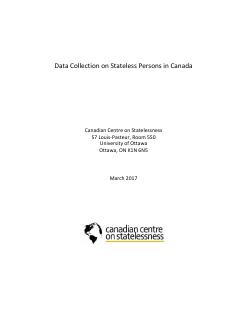
Data Collection on Stateless Persons in Canada
Type of Resource: Report
Theme: Data / Statistics
Region: Americas
View -
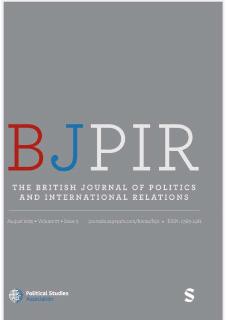
Is the right of return still desirable and sacred among Palestinian refugees?
Type of Resource: Academic publication
Theme: (Forced) Migration
Region: Middle East and North Africa
View
